Galeria
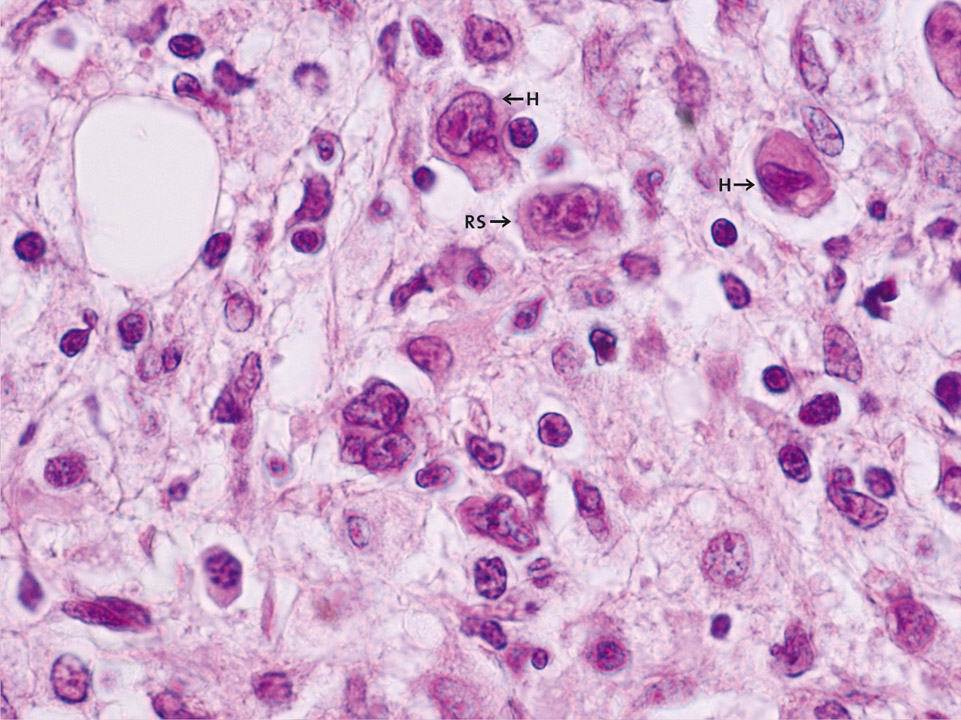
Bone marrow histology (Giemsa stain) showing two Hodgkin cells (H). These giant cells have an oval, non-lobulated nucleus and at least one nucleolus. Reed-Sternberg cells (RS) have a lobulated nucleus with several nucleoli. Both cell types are characteristic of Hodgkin's disease and express the same surface marker CD30, which is otherwise found on activated lymphocytes.
<p>Bone marrow histology (Giemsa stain) showing two Hodgkin cells (H). These giant cells have an oval, non-lobulated nucleus and at least one nucleolus. Reed-Sternberg cells (RS) have a lobulated nucleus with several nucleoli. Both cell types are characteristic of Hodgkin's disease and express the same surface marker CD30, which is otherwise found on activated lymphocytes. </p>
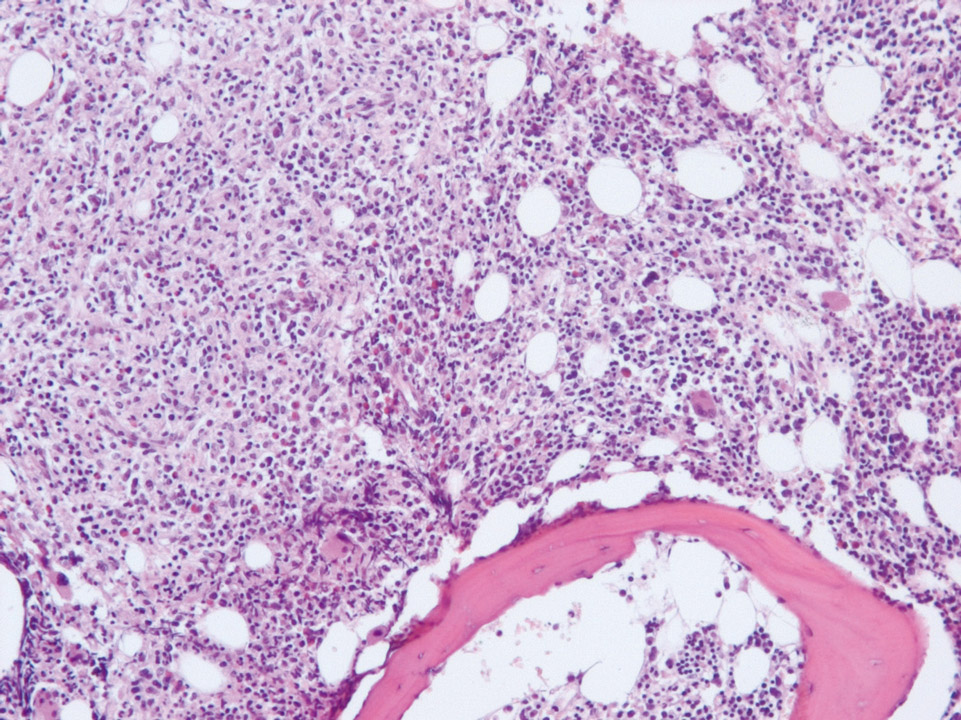
Bone marrow histology (Giemsa stain) of a patient showing an infiltrating Hodgkin's lymphoma on the left side. On the right side normal haematopoietic tissue can be seen.
<p>Bone marrow histology (Giemsa stain) of a patient showing an infiltrating Hodgkin's lymphoma on the left side. On the right side normal haematopoietic tissue can be seen.</p>
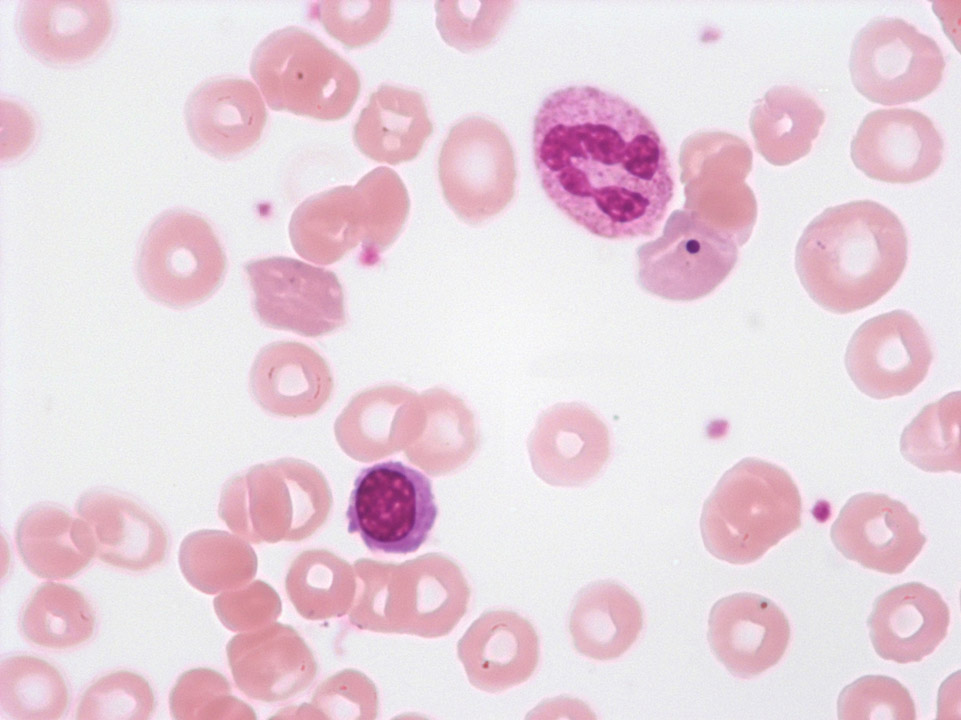
Howell-Jolly bodies in the cell adjacent to the granulocyte, spherocytes, polychromasia, and a single erythroblast in a case of auto-immune haemolytic anaemia (AIHA). (Howell-Jolly bodies are DNA remnants. Polychromatic cells still contain RNA.)
<p>Howell-Jolly bodies in the cell adjacent to the granulocyte, spherocytes, polychromasia, and a single erythroblast in a case of auto-immune haemolytic anaemia (AIHA). (Howell-Jolly bodies are DNA remnants. Polychromatic cells still contain RNA.)</p>
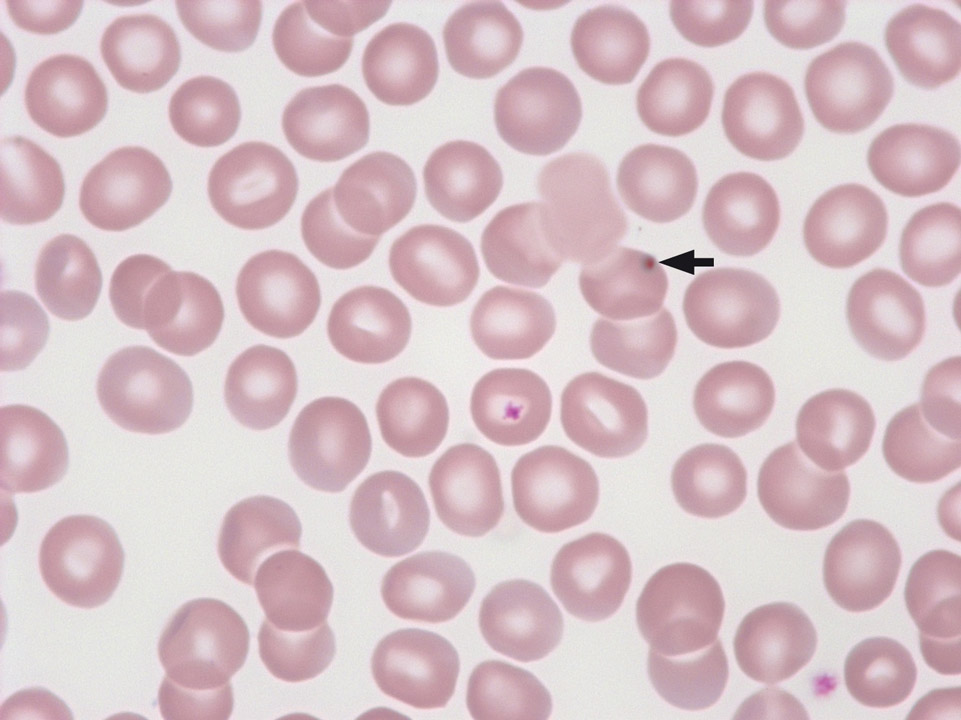
An apparent Howell-Jolly body, caused by contaminated microscope oil, can be identified as an artefact by the fact that it moves independently over time.
<p>An apparent Howell-Jolly body, caused by contaminated microscope oil, can be identified as an artefact by the fact that it moves independently over time.</p>
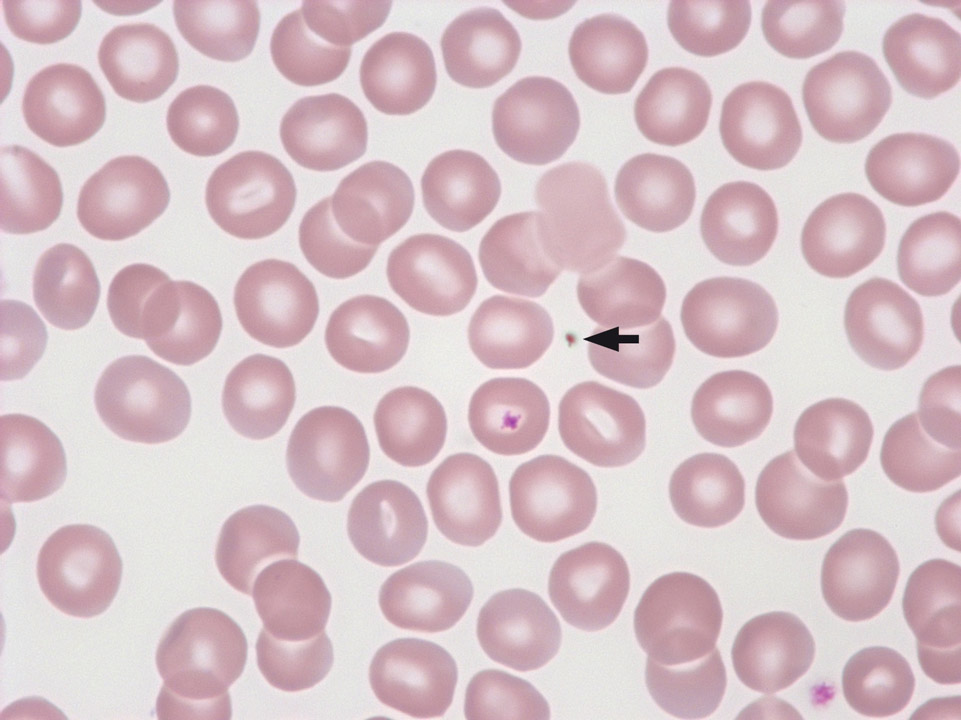
An apparent Howell-Jolly body, caused by contaminated microscope oil, can be identified as an artefact by the fact that it moves independently over time.
<p>An apparent Howell-Jolly body, caused by contaminated microscope oil, can be identified as an artefact by the fact that it moves independently over time.</p>
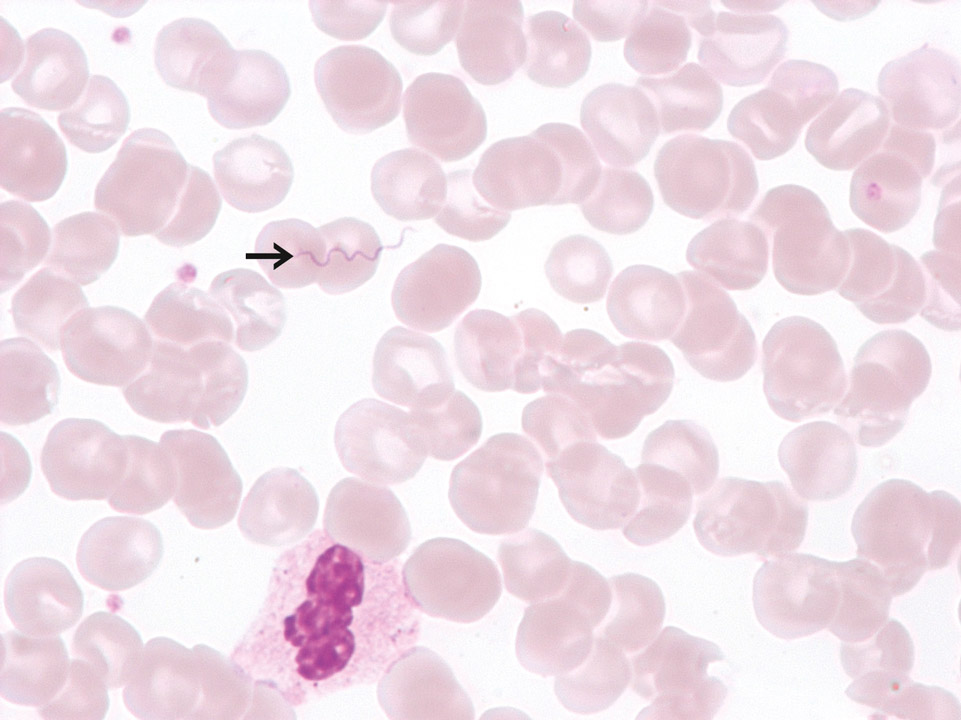
Incidental detection of Borrelia recurrentis (->) in a patient initially suspected to suffer from malaria. Borrelia recurrentis is transmitted by lice and ticks and is the causative agent of relapsing fever. Like malaria, relapsing fever often is a travel-related disease that, after an incubation time of up to 2 weeks, leads to fever attacks.
<p>Incidental detection of Borrelia recurrentis (->) in a patient initially suspected to suffer from malaria. Borrelia recurrentis is transmitted by lice and ticks and is the causative agent of relapsing fever. Like malaria, relapsing fever often is a travel-related disease that, after an incubation time of up to 2 weeks, leads to fever attacks.</p>
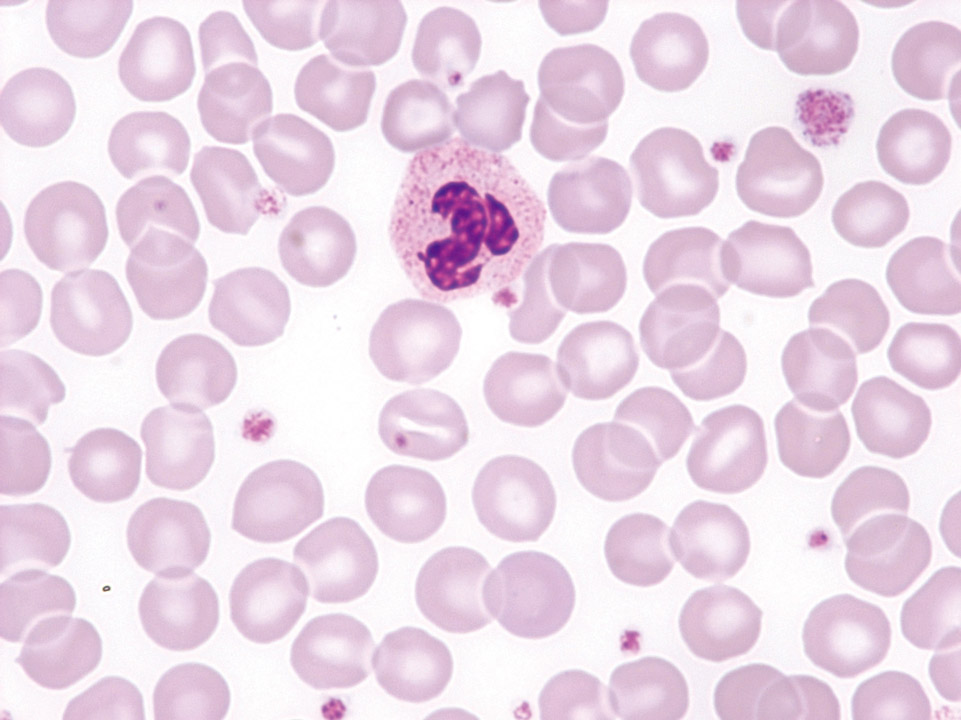
In the peripheral blood (May-Grünwald-Giemsa stain) of this 75-year old woman with PV all three cell lineages are increased: haemoglobin concentration 16 g/dL, white blood cell count 15,000/µL, platelet count 980,000/µL. In functional iron deficiency red blood cells often are microcytic. The MCV is only 75 fL. The haematopoietic cells of the patient show a JAK2 mutation.
<p>In the peripheral blood (May-Grünwald-Giemsa stain) of this 75-year old woman with PV all three cell lineages are increased: haemoglobin concentration 16 g/dL, white blood cell count 15,000/µL, platelet count 980,000/µL. In functional iron deficiency red blood cells often are microcytic. The MCV is only 75 fL. The haematopoietic cells of the patient show a JAK2 mutation.</p>
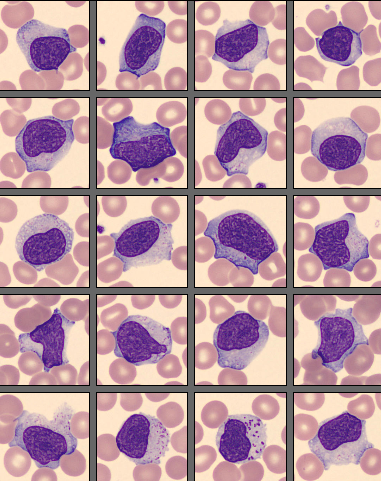
Infectious mononucleosis is an acute condition caused by the Epstein-Barr virus (EBV). The disease is highly contagious and spreads via body secretions, especially saliva. The infection frequently goes unnoticed in children; however, mainly adolescents and young adults exhibit symptoms. Infected B lymphocytes induce a humoral (B cell) as well as a cellular (T cell) immune response which can be seen in an increased concentration of atypical lymphocytes in the blood film.
<p>Infectious mononucleosis is an acute condition caused by the Epstein-Barr virus (EBV). The disease is highly contagious and spreads via body secretions, especially saliva. The infection frequently goes unnoticed in children; however, mainly adolescents and young adults exhibit symptoms. Infected B lymphocytes induce a humoral (B cell) as well as a cellular (T cell) immune response which can be seen in an increased concentration of atypical lymphocytes in the blood film. </p>
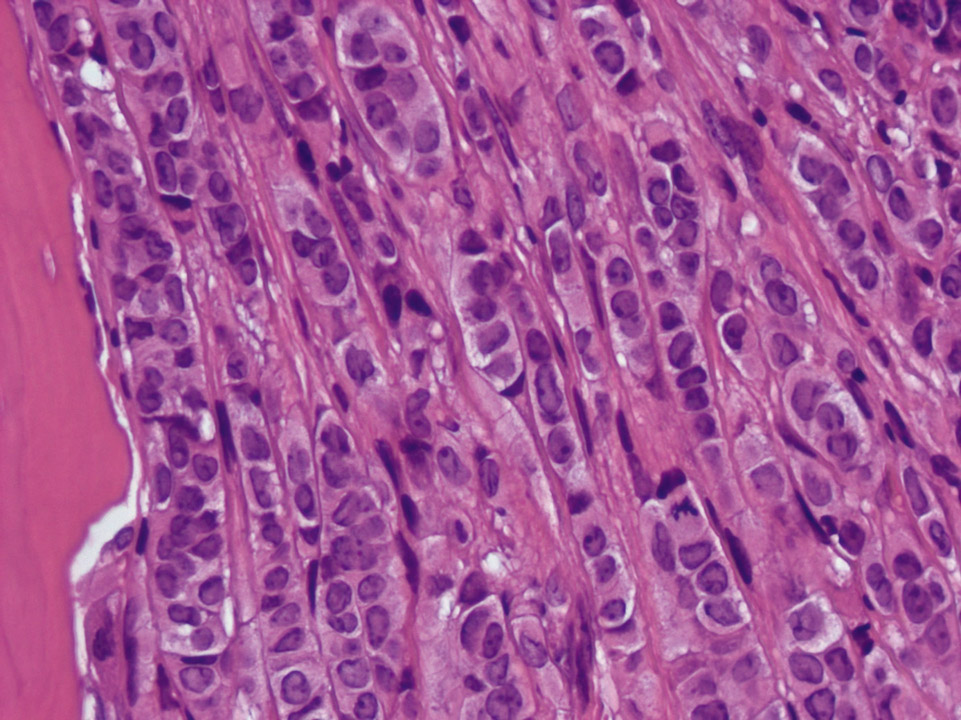
Bone marrow histology (haematoxylin eosin stain) of a patient with breast cancer showing an infiltration of the bone marrow by a lobular carcinoma of the breast.
<p>Bone marrow histology (haematoxylin eosin stain) of a patient with breast cancer showing an infiltration of the bone marrow by a lobular carcinoma of the breast.</p>